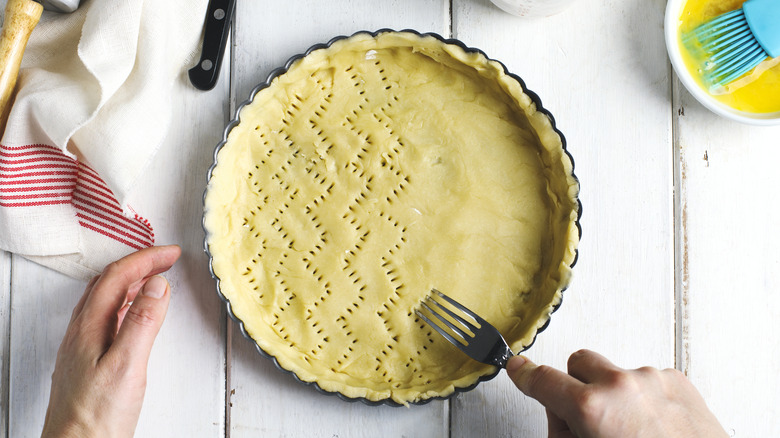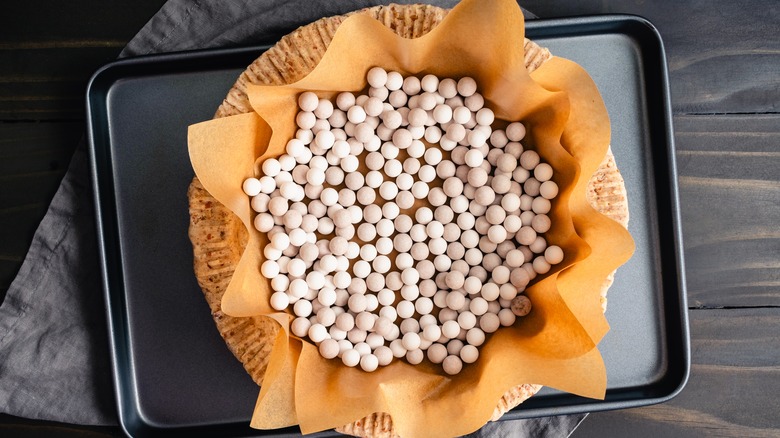The Easy Test To Know When Your Pie Is Properly Par-Baked
Par-baking a pie crust is a key step that can help you avoid the dreaded soggy bottom, but if you take it too far, you'll end up with a pie base that is too hard and overly browned. To steer you in the right direction for the holiday season, Food Republic got some advice from Jennifer Boggiss, CEO and cofounder of Heilala Vanilla.
For Boggiss, the key to par-baking a perfect crust is to use your senses. The cook time on your recipe is only one guideline for doneness — really, you need to pull it out of the oven and feel it for the most accurate results. "You'll know your crust is ready when it turns a beautiful light golden color and feels dry to the touch — it's such a satisfying moment!" Boggiss told Food Republic. The dough should look very lightly cooked, and it will no longer have a that malleable, clay-like feel. Depending on the recipe and dough thickness, this should take about 15 minutes or so.
Sometimes, pie dough will start to puff up during par-baking, but Boggiss has a quick fix for that. "If you see any bubbling, just press it down gently with the back of a spoon," she suggested. Before baking, you can also prick the bottom of the crust all over with a fork, or cover it with parchment paper. Then, fill the pan with pie weights or dried beans to keep it nice and flat.
What is the purpose of par-baking a pie crust?
Not every pie recipe calls for par-baking (aka blind baking), but it is usually recommended for a custard-based or quick-cooking filling. For pies that start out rather liquid-y, like a silky pumpkin pie, giving the crust a head start prevents the filling from quickly soaking into the base, causing breakage and mushiness in the final product. However, in something like an easy apple pie recipe, par-baking may not be necessary, since fruit pies cook for a long time and the filling does not release as much liquid.
One challenge that you might encounter when you par-bake a pie is that the edges get too browned after the second round in the oven. To prevent this from happening, Jennifer Boggiss is a fan of using a pie shield. These gadgets are also sometimes called a pie crust protector, and are basically large, ring-shaped molds made out of oven-safe materials like silicone or metal. They fit around the rim of your round pan, protecting the edges of the dough from the heat. The crust will still cook through, but it won't get quite as brown.
If you don't have a pie shield, Boggiss says that you can use strips of aluminum foil instead "to keep those edges perfectly golden without burning." Of course, overcooking your pie can also cause excessive browning. To make sure all your hard work doesn't go to waste, use the wiggle test to bake pumpkin pies just right.


